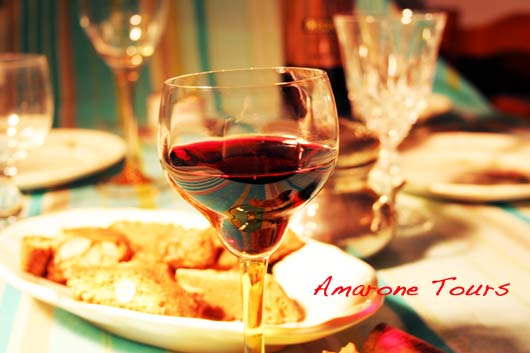
Recioto is considered the ancestor of the Amarone and for many centuries, probably for a couple of millenniums it has been the top Valpolicella wine.
There are documents proving that since Roman time a sweet wine, made of dried grapes, was produced in Valpolicella. The Romans loved sweet wines, and used to add honey, spices and make it lighter with water. The wine produced in Valpolicella, called Retico, was a natural sweet wine, very concentrated therefore perfect to transported in small barrels along the network of Roman roads that also passed along Verona (via Postumia) and Valpolicella (via Claudia Augusta), and be watered down before consumption. Moreover sugars are a natural preservative that helped avoiding alterations of the wine in an age in which wine making technique were not as good as today. It was one of the favourite wines of emperor Augustus and in the old agricultural world it was almost considered a medicine, given to women during puerperium and sick people.
Retico wine must have been very similar to the dessert wine still produced nowadays in Valpolicella: the Recioto. One of the theory concerning its name is that it come from the word Retico that with time become Recioto.
Another theory is that the name come from the Veronese dialect word ‘recie‘ meaning ears. The recie are the two small bunches of grape growing on the two sides of a bigger bunch like ears on the two sides of a face. These bunches are the more exposed to sun rays, the closest to the stem, therefore the sweetest. In the past, the best Reciotos were made only with these two small bunches of grapes, left to dry for few months to rise even more the sugar content.
These bunches are then squeezed and fermented up to a certain point. In order to obtain a sweet wine it is imortant not to let all the sugars been transformed into alcohol. In the past there were few wine making techniques to achieve this, and they were not always effective. That’s how Amarone, a dry wine in which all the sugards were transformed into alcohol.
Today, by dropping the temperature of the wine or filtering it, it is possible to stop the action of the yeasts and obtain a stable Recioto.
With the increasing popularity of dry wines and the Amarone, Recioto production decreased considerably in the past thirty years but almost all wineries in Valpolicella still have a small production of Recioto which is usually sold in small 500 cl bottles.
Very recently, dessert wines are becoming popular again and Recioto in particular, which is one of the few red ones, is highly appreciated. To meet consumers’ taste, many producers are now making a moderately sweet Recioto that becomes an excellent wine to pair with dried biscuits, dry cakes and even dark
